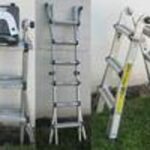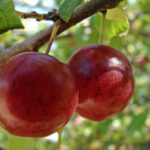We prune trees for their health and for our aesthetic pleasure. While major tree pruning is a dangerous job best left to professionals, pruning small trees is a job that can be handled by any gardener. Any job that can be managed with large secateurs or a pruning saw and does not require the use of a tall ladder or climbing equipment is suitable for the amateur.
Late winter and very early spring is the best time to prune trees. This is just before their growth period begins. All the tree’s stored energy is available to heal the wound made by pruning. If you prune later in the year, it is harder for the tree to recover. Of course, if a branch is damaged, it can be pruned in any season; the clean cut from a pruning saw will heal better than the splintered ends left by wind damage or an accident. Quick healing is desirable because open wood is an invitation to infestation and infection.
Pruning is desirable for the tree’s health. Cut out dead wood and diseased branches. Also remove any branches that rub against each other. Constant rubbing will wear the bark away, leaving a raw spot that is vulnerable to infection and to insects. If two branches are crossed, cut out one of them before they begin rubbing against each other. When you have accomplished this, you will have a far healthier tree.
Pruning can also increase the gardener’s comfort in the garden and the pleasure he finds there. Any tree branch that crosses a path and constantly annoys walkers should be removed. If a tree casts heavy shade and you want to grow flowers beneath it, you can increase available sunlight dramatically by removing the lower limbs.
A tree can also be pruned to make it more beautiful. You can remove misshapen growth that resulted from earlier damage (or someone else’s inept pruning). You can thin out the branches to make the tree appear more graceful. You can remove some top growth to encourage blossoms and fruit on the lower branches. Follow the natural growth pattern to enhance the tree’s shape, and see how beautiful it can be!
Where to cut the branch? Never, never cut half-way down the limb. The branch will die back to its base anyway, and the dying wood will invite pests and disease. Always cut at the base of the branch. If you look closely, you will see a bulge at the spot where a twig meets a branch, or a branch meets the trunk of the tree. This is called the branch collar. Cut just outside the branch collar, and the wound will heal very quickly.
Twigs and small branches can be removed with secateurs. Larger branches require the use of a pruning saw. Don’t try to use a carpenter’s saw for this job. The large, deeply-cut teeth of a pruning sew are especially designed to cut cleanly through green wood. If you are pruning a large branch, start by cutting from upward on the bottom of the branch, just past the branch collar. Then cut down from the top until the branch is sawn through. If you don’t make the bottom cut first, the weight of the falling branch is likely to tear a large strip of bark from the tree, leaving a wound that is difficult for the tree to heal.
Gardeners were once advised to paint or otherwise seal the stump. This isn’t really necessary if you’ve cut just beyond the branch collar. The tree can heal an incision at that spot very quickly, and paint will only delay healing.
So go ahead and cut out any dead or diseased wood. Cut out crossed and rubbing branches. Cut out unsightly growth. Then walk away. Remember, you can always prune more branches later, but you can’t replace one your cut by mistake!
Prune properly, and enjoy the healthy trees in your beautiful garden!





